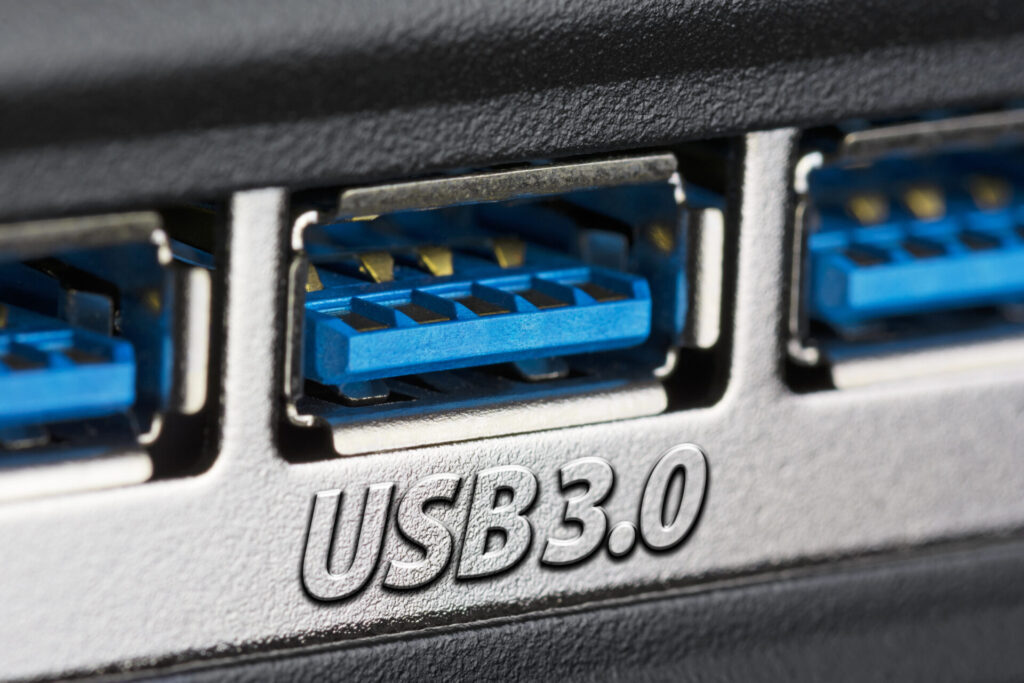As technology advances, we gravitate toward higher standards: Thunderbolt instead of USB 2.0, USB-C instead of USB-A, and so on. However, older standards like USB 2.0 still have a place in many people’s setups, since most USB devices simply don’t need anything more advanced.
USB 2.0 Uses Less System Bandwidth
USB 2.0 is an older data standard than USB 3.0, 3.1, or 3.2, as well as more modern things like Thunderbolt 4 or USB 4.0. These newer standards offer higher data bandwidth, transfer speeds, and power delivery, allowing more advanced devices to be used on your setup — think a crunchy 1080p webcam on USB 2.0 versus an uncompressed 4K webcam on USB 3.0. These standards also cause confusion, such as figuring out whether your USB-C port is USB 4.0 or another standard.
However, this high data and power usage can also put a strain on your system. Most systems and USB hubs have limits on the amount of data and power they can use with an external device, and USB 3.0+ devices use more data and power bandwidth, generally filling it with fewer devices than USB 2.0. Most USB devices use much less than their full data and power bandwidth – while USB 3.0 supports up to 5 Gbps, most of these devices don’t even come close to that limit. However, higher standard devices use more system bandwidth.
Imagine you have a Thunderbolt 4 port on your MacBook connected to a large USB hub. If that hub is also Thunderbolt 4, your maximum data transfer rate is 40 Gbps, supporting up to eight USB 3.0 devices at the full speed of 5 Gbps. However, you’re more likely to have a USB 3.1 or USB 3.2 hub, as these are much less expensive. USB 3.2 has a limit of 10 Gbps, so you can only expect to use two USB 3.0 devices simultaneously at full bandwidth. Many USB devices don’t use their full data standard, but bandwidth limits remain.
In contrast, USB 2.0 has a limit of 480 Mbps, which means you can generally use many more USB 2.0 devices, provided your system’s USB controller can use that many devices simultaneously (most USB controllers have a limit of 127 total USB devices, but you’ll probably use up all the bandwidth before you reach that number). It would take about 80 USB 2.0 devices or about 20 for USB 3.2 to use the bandwidth of a Thunderbolt 4 hub.
In short, USB 2.0 devices use very little system bandwidth, so you rarely need to worry about whether your system can handle them when you buy them. I have a lot of USB devices and I’m usually close to my bandwidth limits, but I rarely need to worry about whether the device I’m connecting is USB 2.0 or not.
Compatibility is more assured on USB 2.0 devices
Apart from the bandwidth issue, USB 2.0 is compatible with more devices and ports. The first and most modern example would be that most PC motherboards have a limited amount of USB 3.0 or higher ports, which means that even if you’re not concerned about bandwidth, you may not have enough USB 3.0 or Thunderbolt ports. Also, Thunderbolt and the devices that use it cause even more confusion by looking similar to USB-C.
Similarly, if you’re using an older device, your port may lack USB 3.0 support or have some other incompatibility, such as a USB-C port. Since many modern devices use USB 3.0 or higher and USB-C rather than USB-A, the good news is that these higher standards are backward compatible, although potentially requiring a USB-A to USB-C adapter.
In contrast, USB 2.0 ports and cables are not guaranteed to be forward compatible. If you plug a USB 3.0 device into a USB 2.0 port, its functionality may be limited.
For example, a 4K capture card might not work at all because it doesn’t have enough bandwidth, while an external drive will likely operate at a slower speed. Unfortunately, this varies by device, so you may have to experiment. Even if you plug a USB 3.0 device into a USB 3.0 port while using a USB 2.0 cable, you’ll still have the same problem. Simply put, almost all USB cables are at least USB 2.0, which means if your device is USB 2.0, you can avoid any guessing game about compatibility.
USB 2.0 Causes Fewer Problems
As a tech support person for a USB device company with both USB 2.0 and USB 3.0+ devices, I can confidently say that there were far fewer tech support tickets for USB 2.0 devices than for USB 3.0 or higher devices. These errors primarily result from user errors related to the topics above: excessive use of system bandwidth and hardware incompatibility.


